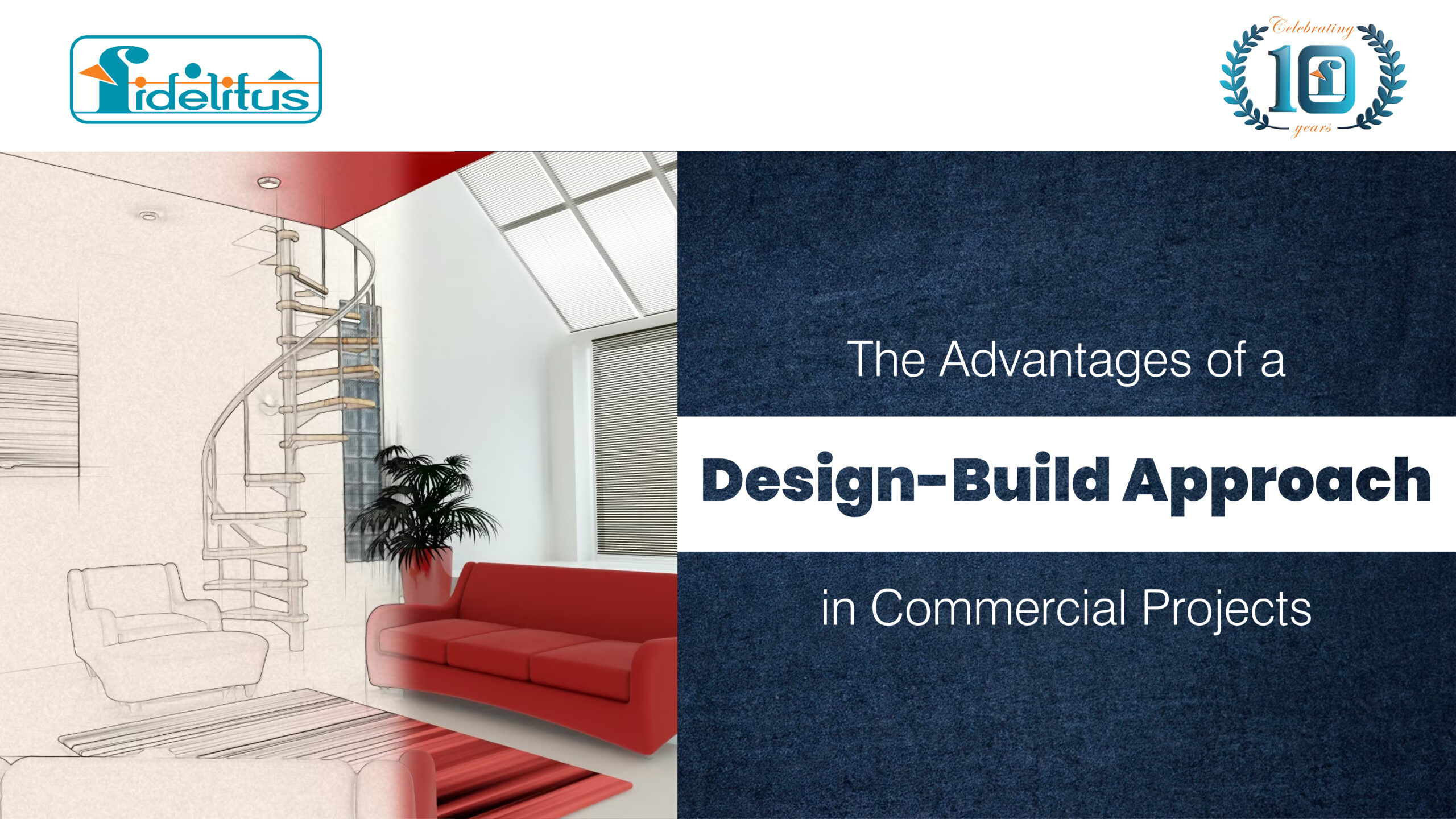The Advantages of a Design-Build Approach in Commercial Projects
In the world of commercial property services, success often hinges on making the right choices from the outset. One of those critical decisions involves choosing the project delivery method that best suits your objectives. Among the many options available, the design-build approach has gained significant traction in recent years for commercial projects. This integrated method, where the design and construction phases are handled by a single entity, offers a range of compelling advantages. In this article, we will explore why the design build approach is gaining popularity and how it can benefit commercial projects of all sizes.
The Evolution of Project Delivery
Before we delve into the advantages of the design build approach, it’s essential to understand its origins and how it compares to traditional methods. Traditionally, commercial construction projects followed a design-bid-build model. Here’s a brief overview of both methods:
Design-Bid-Build (DBB)
1. Sequential Process: Under DBB, the project unfolds in a sequential manner. It begins with the design phase, followed by bidding for construction contracts, and finally, the construction phase.
2. Competitive Bidding: The construction phase involves selecting a contractor through competitive bidding, often based on the lowest bid.
3. Limited Collaboration: There’s minimal collaboration between the designer and the builder during the design phase.
Design-Build (DB)
1. Integrated Approach: In the design-build approach, a single entity is responsible for both the design and construction aspects of the project.
2. Collaboration: Collaboration is encouraged between designers and builders throughout the project, leading to a more cohesive and efficient process.
3. Streamlined Communication: Communication flows more smoothly, as there’s no need to coordinate between separate design and construction teams. Now that we have a clear understanding of the design-build approach, let’s explore its advantages in depth.
Advantages of a Design-Build Approach
1. Streamlined Communication and Collaboration
One of the standout benefits of the design-build approach is the seamless communication and collaboration it fosters. With all project stakeholders operating under a single umbrella, there is a natural synergy between the design and construction teams. This collaboration results in:
- Faster Decision-Making: Quick resolution of design issues and construction challenges.
- Design Integration: The ability to integrate construction feedback into the design phase, enhancing constructability.
- Cost Control: Continuous communication helps in controlling costs and avoiding unexpected expenses.
- Timely Completion: Streamlined communication often leads to faster project completion.
2. Cost Efficiency
Cost control is a critical consideration for any commercial project. Design-build provides several avenues for cost savings:
- Early Budgeting: Since the builder is involved from the early stages, there is greater accuracy in budget estimation.
- Reduced Change Orders: Fewer design-related changes during construction result in fewer change orders, reducing costs.
- Value Engineering: The integrated team can explore value engineering options to optimize costs without compromising quality.
- Competitive Bidding: In the design-bid-build model, competitive bidding can sometimes lead to under-qualified contractors, which can result in cost overruns. Design-build mitigates this risk.
3. Faster Project Delivery
Commercial projects often come with tight schedules. The design-build approach can significantly expedite project delivery:
- Single-Point Responsibility: The single entity accountable for design and construction reduces delays due to disputes or finger-pointing.
- Parallel Workstreams: Design and construction phases can overlap, saving time compared to the sequential nature of DBB.
- Early Procurement: Early procurement of materials and subcontractors can prevent supply chain delays.
4. Enhanced Quality Control
Quality is paramount in commercial projects, and design-build offers advantages in this regard:
- Clear Accountability: The design-builder is responsible for the project’s overall quality, reducing the risk of miscommunication or misunderstandings.
- Efficient Problem Resolution: Any quality issues that arise can be addressed swiftly and efficiently by the integrated team.
- Consistency: The design-builder ensures that the design intent is maintained throughout the construction phase.
5. Flexibility and Innovation
Design-build encourages innovation and adaptability, allowing for:
- Design Evolution The flexibility to adjust designs during construction to meet changing needs or requirements.
- Incorporation of New Technologies: The integrated team can readily incorporate new technologies and sustainable practices.
- Client Input: Clients have a more active role in shaping the project’s outcome.
Is Design-Build Right for Your Commercial Project?
While the advantages of the design-build approach are evident, it’s essential to evaluate whether it aligns with your specific project goals and requirements. Consider the following factors when making your decision:
- Project Size and Complexity
Design-build is well-suited for a wide range of commercial projects, from small renovations to large-scale developments. However, for exceptionally complex projects, it’s crucial to ensure that the design-builder has the necessary expertise and resources. - Project Timeline
If time is of the essence, design build can be a game-changer. It excels in meeting tight deadlines, making it an ideal choice for projects with time-sensitive components. - Client Involvement
Design-build encourages client involvement throughout the process. If you value active participation in decision-making and design evolution, this approach is likely a good fit. - Budget Constraints
For projects with tight budget constraints, design-build offers early budgeting and cost control benefits that can help keep expenses in check. - Quality Expectations
If maintaining stringent quality standards is a top priority, the clear accountability and enhanced quality control of design-build may be appealing.

The design-build approach has emerged as a powerful and versatile project delivery method in the world of commercial property services. Its ability to streamline communication, control costs, expedite project delivery, and enhance quality control makes it an attractive choice for a wide range of projects. By fostering collaboration, flexibility, and innovation, design-build provides a framework for achieving commercial project success.
However, it’s essential to evaluate your project’s unique needs and objectives to determine whether the design-build approach is the right fit. By doing so, you can harness the many advantages of this integrated method and pave the way for a successful and efficient commercial project that meets or exceeds your expectations. At Fidelitus, our two decades of experience have shown us the concrete benefits of this approach time and again.










